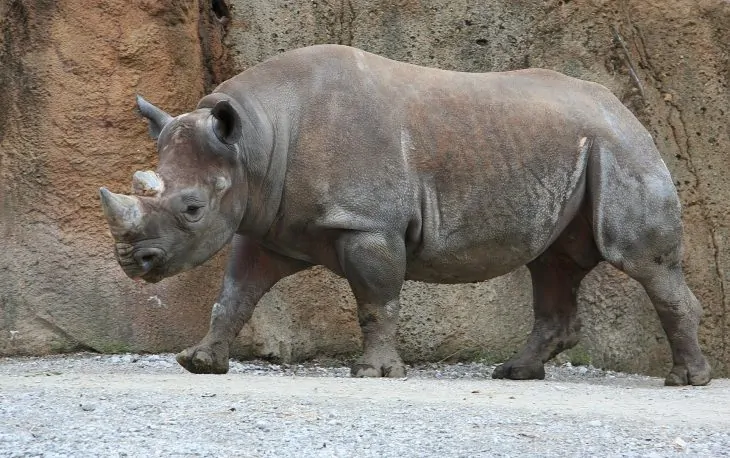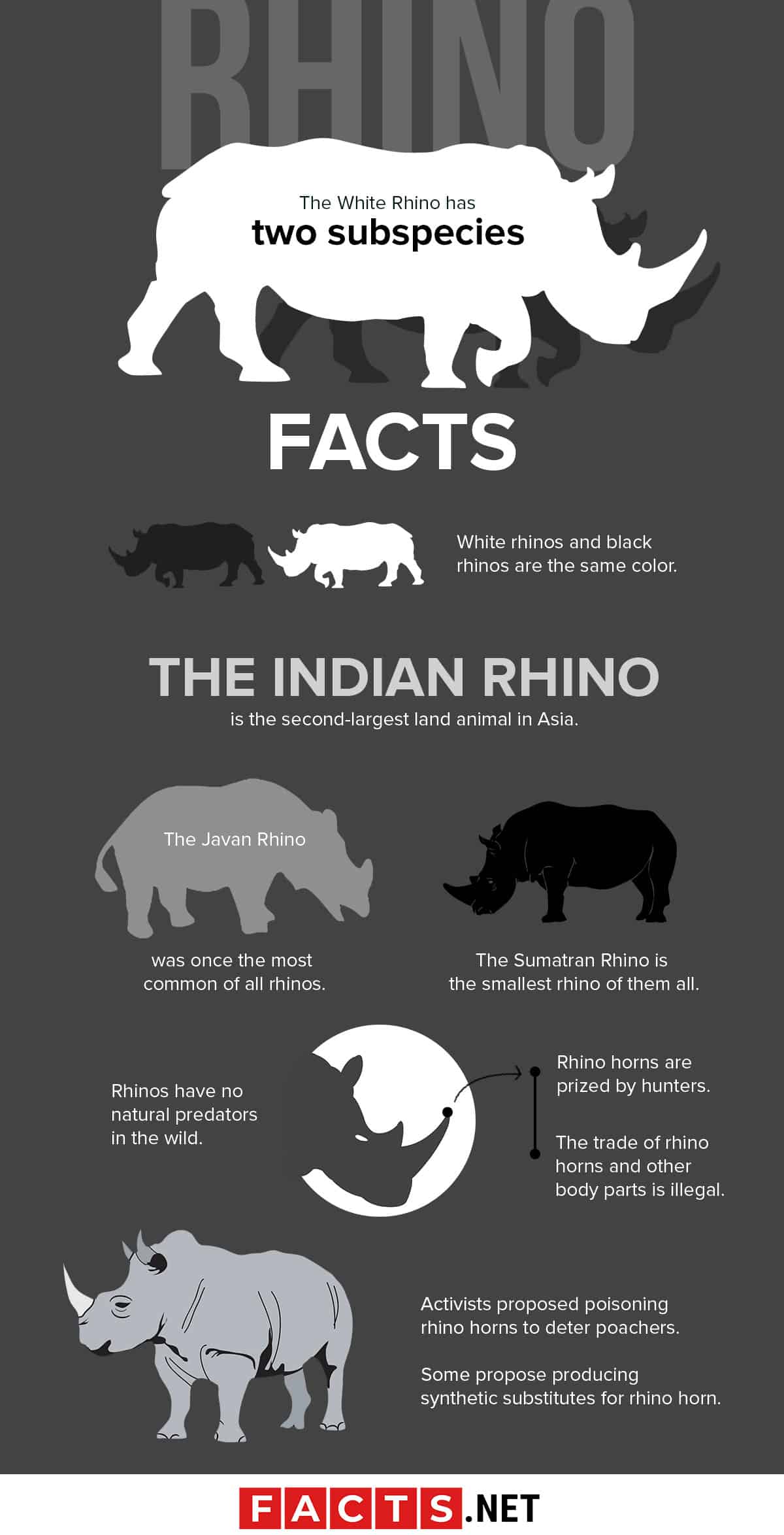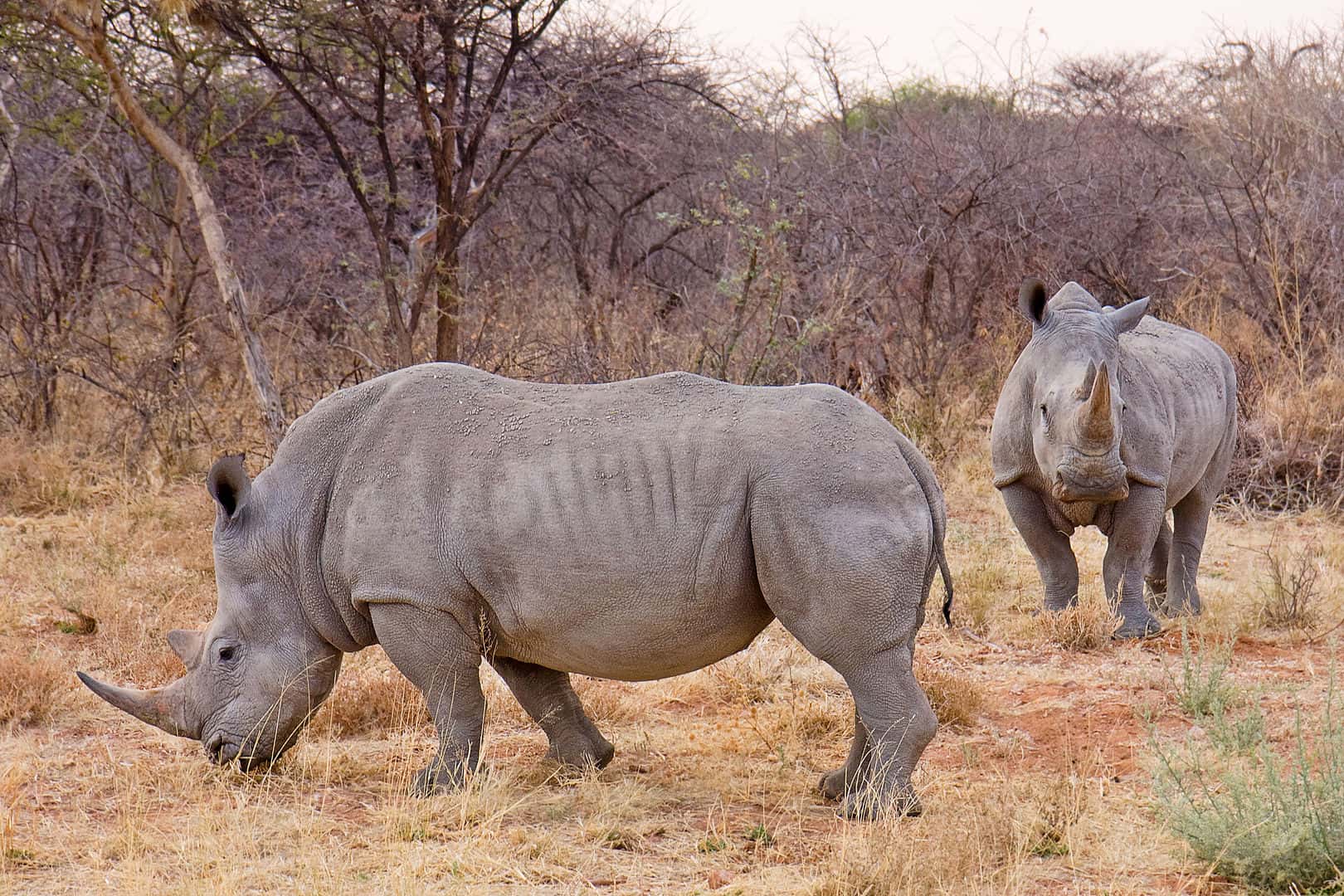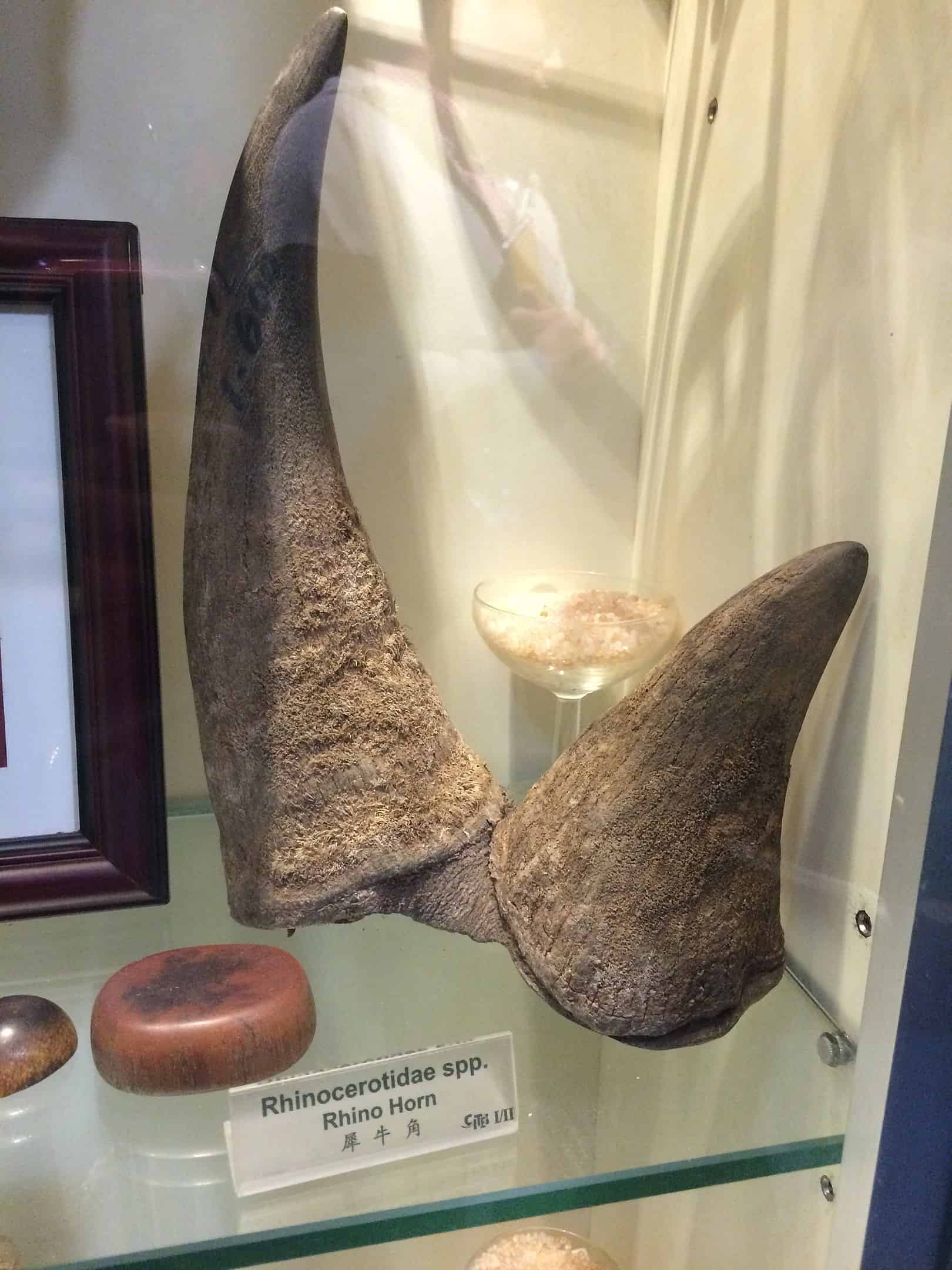
Rhinos are among the first animals any of us are taught about when we were children. Aside from having horns, how much do we really know about these animals? Take a closer look at one of the most unique-looking members of the animal kingdom with these rhino facts.
- There are 5 species of rhinos in the world today.
- Only 2 rhino species are native to Africa.
- The other 3 rhino species are native to Southern Asia.
- A rhino’s brain weighs between 400 to 600 grams.
- A rhino’s skin can get as thick as 5 cm.
- Rhinos first evolved across what is now Eurasia during the Eocene Epoch.
- The Sumatran Rhino evolved around 15 million years ago.
- Indian and Javan rhinos evolved between 4 to 2 million years ago.
- The 2 African rhino species evolved around 1.5 million years ago.
- Wooly rhinos lived in what is now China 1 million years ago.
- Wooly rhinos migrated to Europe around 600,000 years ago.
- Prehistoric human hunters drove wooly rhinos about 29,000 years ago.
- Prehistoric humans depicted rhinos in the Chauvet Cave Paintings of France between 30,000 to 10,000 years ago.
- The Greek historian and geographer Agatharchides wrote about rhinos in the 2nd century BC.
- Albrecht Durer made an inaccurate woodcut of the rhino in the early-16th century.
- Rhinos are herbivores.
- A rhino has one or two horns, never more or less.
- The name rhino comes from a Greek word meaning nose-horned.
- Black, Javan, and Sumatran Rhinos are all critically-endangered species.
- The White and Indian Rhino, in contrast, are only near-threatened and vulnerable, respectively.
Rhino Facts Infographics

The White Rhino has two subspecies.
The northern and southern white rhino reflect the location of their respective habitats in Africa. The northern white rhino lived in East and Central Africa, while the southern white rhino lives in South Africa. One of the sadder rhino facts is that the northern white rhino is almost extinct, with only 2 females left of the subspecies. In contrast, over 20,000 southern white rhinos still live in the wild.

White rhinos and black rhinos are the same color.
In fact, a black rhino has more or less the same coloration as white rhinos. Instead of the color, white rhinos are named after the Afrikaan word wyd, which describes the animal’s square upper lip. Black rhinos have a pointed upper lip, named after the opposite color to easily differentiate them from white rhinos. Now there’s an interesting example of Rhino Facts.
The Indian Rhino is the second-largest land animal in Asia.
Only the Asian elephant is larger, in fact, with Indian Rhinos growing to 6 ft high and 12 ft long. On average, they weigh around 2,200 kg. Indian rhinos don’t have a horn until they reach around 6 years of age, where it starts growing up to 10 inches long. Some specimens grow even longer at up to 14 inches in length.
The Javan Rhino was once the most common of all rhinos.
In the past, Javan Rhinos lived not only in Indonesia, or even Southeast Asia, but spread into China and even into India. Today, poaching and the destruction of their habitats reduced their numbers to only 58 to 68 animals on the Indonesian island of Java. To respect the animals’ solitude, scientists today limit themselves to video footage and fecal samples to study the Javan Rhino. While there is the hope of the species recovering in the future, the small remaining population has scientists worrying about the possibility of excessive inbreeding among the Javan rhinos.

The Sumatran Rhino is the smallest rhino of them all.
Despite being the smallest rhino species, they’re still big animals at 4 ft tall and 11 ft long, weighing 800 kg on average. Sumatran rhinos have two horns, one of which usually grows to around 10 inches long, while the other is usually only a stub.
Sumatran rhinos are distinct for having hair, a coat of red fur covering most of their body. Calves are hairier than adults, but it’d be hard to spot their fur in the wild due to the thick mud of their habitats. Today, about 80 Sumatran rhinos remain in the wild, living in Sumatra and Borneo.
Rhinos have no natural predators in the wild.
Calves are sometimes preyed on by big cats or crocodiles, but those predators tend to avoid adults. This is why calves stick so close to their parents.Unfortunately, humans are not natural predators, with weapons like spears and bows and arrows that eliminate the rhino’s natural advantages. Poaching has caused their population to dwindle.

Rhino horns are prized by hunters.
Rhino horns have several uses, some practical, and others with no factual basis. Among its practical uses is for making handles for daggers, such as in Oman and Yemen. In China and Vietnam, rhino horn is a part of traditional medicine, believed to cure even cancer.
Even in Europe, there is a belief that rhino horn is an antidote to poison and an aphrodisiac. The medical community denounces these claims and compares them to drinking powdered fingernails in water. One of the less-known rhino facts is that heir horns are made of pure keratin, much like a human’s nails. Rhino horns are also used for decorative purposes.
The trade of rhino horns and other body parts is illegal.
Since 1977, the signing of the Convention on International Trade in Endangered Species of Wild Fauna and Flora (CITES) outlawed rhino trade. Despite the ban, the trade continues, with seized horns alone amounting to 11,000 kg worldwide in 2018. Most of the horns go to Vietnam, where a single horn reaches prices of up to $250,000.
Activists proposed poisoning rhino horns to deter poachers.
In 2011, a conservation group proposed lacing rhino horns with poison to kill parasites and discourage poachers. Once a poisoned horn is used in traditional medicine, it’d cause nausea and convulsions for people who take it. However, critics argued that poachers won’t care if their customers get sick, and the poison won’t affect those who buy rhino horn for decorative purposes.
Some propose producing synthetic substitutes for rhino horn.
These rhino horn substitutes are artificially engineered to be like the real thing. Some activists expressed skepticism at offering substitutes as a way to stop the illegal trade in rhino horns and body parts. However, they are still considering its potential success. Now that’s one for hopeful rhino facts.

Was this page helpful?
Our commitment to delivering trustworthy and engaging content is at the heart of what we do. Each fact on our site is contributed by real users like you, bringing a wealth of diverse insights and information. To ensure the highest standards of accuracy and reliability, our dedicated editors meticulously review each submission. This process guarantees that the facts we share are not only fascinating but also credible. Trust in our commitment to quality and authenticity as you explore and learn with us.
